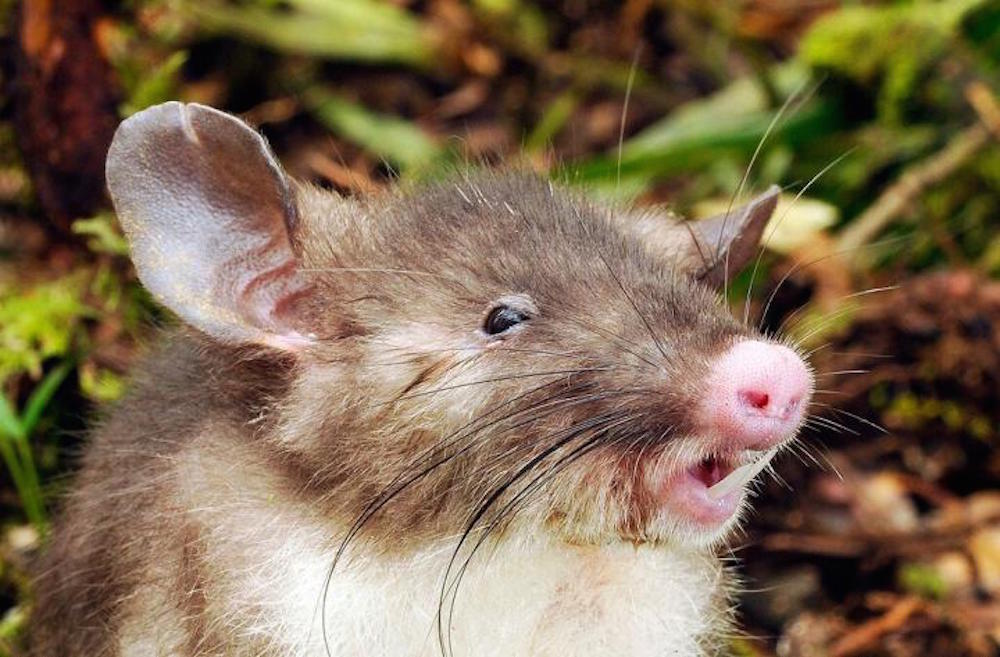This Pig-Nosed Rat with Vampire Teeth Will Haunt Your Dreams

It has a nose like a cute little piglet's, ears that only a mother could love and teeth that would make Dracula run in fear: This odd-looking rodent captured researchers' attention when they discovered it back in 2013, but now they've described it as a new species.
The elusive animal, aptly named the hog-nosed rat (Hyorhinomys stuempkei), inhabits the Indonesian island of Sulawesi. In 2013, researchers studying the island's other rat species caught two of these pig-snouted rodents inside traps. They knew right away that the captured specimens were special, said Jacob Esselstyn, curator of mammals at Louisiana State University's Museum of Natural Science and one of the researchers who caught the hog-nosed rat.
"I had never seen a rat with a nose like that," Esselstyn told Live Science. "When I took it out of the trap, I knew it was a new species. There was never any doubt in my mind." [From Blobfish to 'Adorable' Octopus: 9 Animals with Perfect Names]
Esselstyn is quite familiar with the rodents on the mountainous island of Sulawesi. He's previously captured and identified two other new species of rats there: the few-toothed shrew rat and the Sulawesi water rat.
But H. stuempkei doesn't much resemble its fellow island rodents, Esselstyn said. He noted that the hog-nosed rat has nasal passages that face forward, instead of being directed to the sides as they are in other species of shrew rat. (Shrew rats are long-faced rodents that dig in the dirt for food.) Its weird morphology, coupled with its unique genetic makeup, led Esselstyn and his colleague Kevin Rowe, senior curator of mammals at Museum Victoria in Australia, to conclude that H. stuempkei belonged to its own genus.
The animal has a long snout just like most other shrew rats, but its oversize, upturned nose makes this animal really stand out. Most rats have small, moist, hairless bits of skin for noses — but not H. stuempkei.
"When you look at this animal, the first thing you notice is its nose. It's like a big target," Esselstyn said, noting the distinctive pink coloring of the critter's proboscis. [The 12 Weirdest Animal Discoveries]
Sign up for the Live Science daily newsletter now
Get the world’s most fascinating discoveries delivered straight to your inbox.
If you can pull your attention away from the hog-nosed rat's snout, you might also notice that this rodent has particularly adorable ears, giving it a Mickey Mouse quality that's hard not to love. But keep staring, and your affection for this rodent might turn to fear. The critter's teeth are just as oversize as its ears.
Their teeth "are extremely long incisors," Esselstyn said. "I don't know of any other rats that have incisors that long," he added. The creatures the researchers captured had bottom teeth that measured more than 0.75 inches (20 millimeters) long.
The hog-nosed rat is also missing a feature that most rodents (and humans) have: the coronoid process. This protuberance of bone located on the jaw evolved to make chewing easier for rats that eat hard foods, like seeds or plants. But shrew rats typically don't have large coronoid processes because their food — earthworms and beetle larvae — is soft. In fact, H. stuempkei doesn't have a coronoid process at all.
But like most shrew rats, the hog-nosed rat does have a long, narrow skull, which Esselstyn said likely evolved to somehow heighten the animal's sense of smell and enable it to better sniff things out in the dirt. (As the skull lengthens, bones and tissues get thinner, perhaps strengthening olfaction, Esselstyn explained.)
What remains a mystery is the purpose of the little critter's cute piggy nose, Esselstyn said. Also mysterious are the many other species of animals that remain to be discovered on Sulawesi.
"We've discovered a lot of new things over the past few years, but there are probably a lot more on the way," Esselstyn said.
With any luck, the researchers will soon find another adorable animal to share with the world — perhaps one without disturbingly large teeth.
Follow Elizabeth Palermo @techEpalermo. Follow Live Science @livescience, Facebook & Google+. Original article on Live Science.

Elizabeth is a former Live Science associate editor and current director of audience development at the Chamber of Commerce. She graduated with a bachelor of arts degree from George Washington University. Elizabeth has traveled throughout the Americas, studying political systems and indigenous cultures and teaching English to students of all ages.









